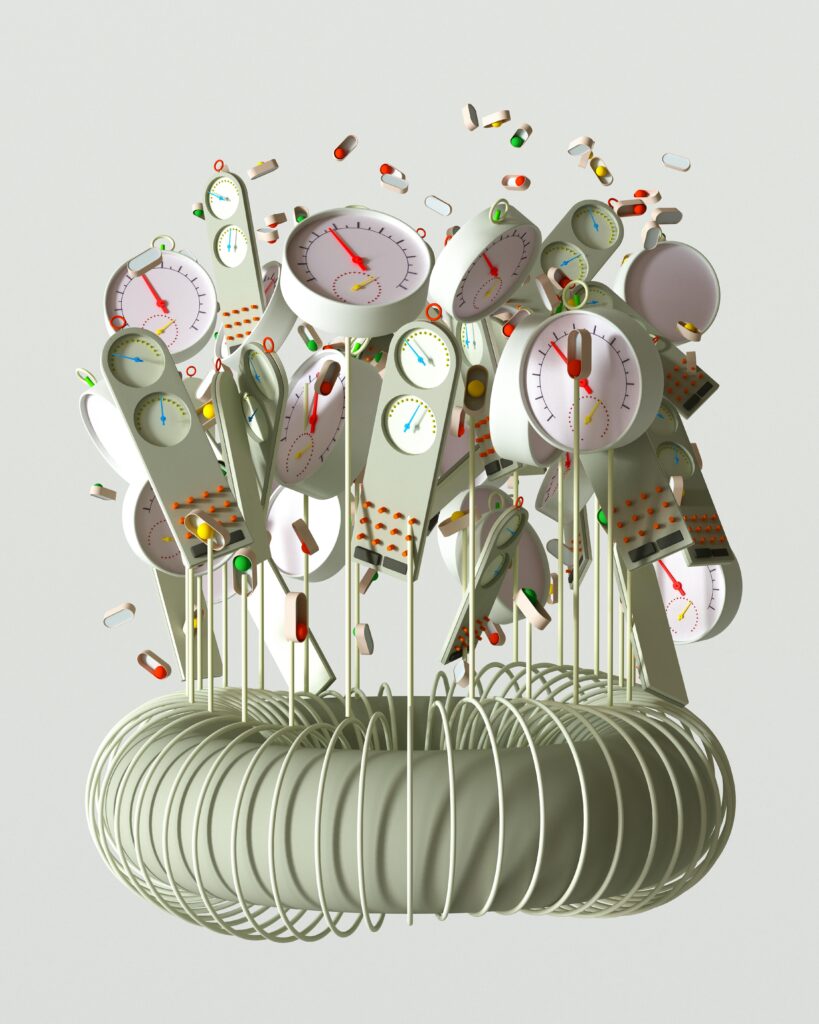Automation Of The Future
As someone deeply fascinated with the rapidly evolving world around us, I’m thrilled to share my thoughts on what has been capturing the imaginations of innovators and businesses alike: the prospects of future automation. Technological advancements are poised to revolutionize how we work, play, and live, with automation being at the forefront of this transformation. In this upcoming article, I’ll be exploring the potential that lies ahead for automation, where intelligent machines are not just a part of our day-to-day lives, but integral to the fabric of our society. Get ready to embark on an insightful journey into the automated landscapes that await us.

Understanding Automation
Defining Automation in the Modern Context
When I think about automation in its modern context, I see it as the utilization of technology to perform tasks without human intervention. It could involve software, machines, artificial intelligence—or a combination of these technologies—to create systems that operate with impressive efficiency and reliability. From smart thermostats regulating home temperatures to complex algorithms managing stock trades, automation has become a fundamental component of our daily lives.
History and Evolution of Automation
Automation isn’t new; it’s been evolving over centuries. It began with simple mechanical systems like the loom that revolutionized the textile industry. From there, automation took a huge leap with the Industrial Revolution, introducing mass production and the assembly line. Fast forward to the digital age, and we’re now in an era where software automation and robotics have ushered in exceptional advancements, changing the way we live and work.
Key Components of Automation Systems
The key components of automation systems are varied, but generally include sensors to gather data, actuators to perform physical actions, control systems to make decisions, and communication systems to connect components. It’s a symphony of technology where each part plays a critical role in ensuring seamless operations. For me, the beauty of these components lies in their ability to work together in harmonious precision.
The Role of Artificial Intelligence and Machine Learning
Artificial Intelligence (AI) and Machine Learning (ML) have a significant role in advancing automation. They help systems make sense of complex data, adapt to new situations, and improve over time. This intelligence layer is what makes modern automation not just automated but also smart, capable of tackling more nuanced tasks that once required human judgment.
The Impact of Automation on Employment
Job Displacement Concerns
As someone who navigates through different industries, I’ve seen the concern about job displacement firsthand. Automation can replace repetitive and manual jobs, which can be alarming for those whose livelihood depends on these roles. It’s a real concern that demands thoughtful consideration and meaningful responses from society.
The Creation of New Job Opportunities
Despite displacement worries, I’ve also witnessed automation creating new jobs—roles that require different skill sets like system design, maintenance, data analysis, and AI programming. The advent of these new opportunities tells me that while automation changes the job landscape, it doesn’t necessarily diminish it.
Education and Reskilling Challenges
The transition requires us to adapt, and adaptation often means education and reskilling. I believe that the challenge lies in ensuring that current and future workers have access to the resources they need to thrive in an automated world. This is a collective hurdle that necessitates a strong partnership between educational institutions, industries, and individuals.
The Future of Work-Life Balance
As automation takes on more repetitive tasks, I’m optimistic about the potential for a better work-life balance. It promises a future where humans can focus on creative, strategic, and interpersonal tasks—activities that often yield more personal satisfaction and less burnout.
Automation in Manufacturing
Robotics on the Production Line
Robotic automation on production lines is truly a sight to behold. It’s the embodiment of efficiency, precision, and consistency. Robots work tirelessly, they don’t get tired or make mistakes due to fatigue, which underscores a level of productivity humans can’t match over long periods.
Smart Factories and Industry 4.0
Industry 4.0 has become a buzzword synonymous with smart factories, where the Internet of Things (IoT), AI, and data analytics come together. This concept captures my excitement for an interconnected manufacturing space that is efficient and responsive to real-time changes.
Customization and Small Batch Production
One of the most thrilling aspects of modern manufacturing for me is the ability to customize and produce small batches cost-effectively. Automation makes it possible for consumers like myself to order customized products without paying a fortune or waiting months.
Sustainability and Efficiency Gains
I’m passionate about the planet, and automation presents a potent tool for making manufacturing sustainability goals achievable. Efficiency gains from automation translate into reduced waste, lower energy consumption, and smarter resource management—actions that all point toward a healthier environment.
Automation in Healthcare
Robot-assisted Surgery
Robot-assisted surgery is redefining medical procedures. Robots offer a precision that enhances a surgeon’s ability to perform delicate operations, potentially improving patient outcomes. It’s amazing to think about the lives that could be improved or saved through such technology.
Automated Diagnostic Systems
Automated diagnostic systems are transforming the speed and accuracy with which health conditions can be diagnosed. Harnessing the power of AI, these systems can analyze vast amounts of medical data to support doctors in diagnosing illnesses more quickly and accurately. As I see it, this advancement is nothing short of revolutionary for the healthcare field.
Health Monitoring and Alert Systems
The rise of wearable technology and smart health monitoring is something I’m particularly excited about. These systems keep track of vital health data and provide early warnings for potential health issues, offering peace of mind and proactive healthcare in ways that were unimaginable just a few years ago.
Data Management and Patient Records
Automation streamlines the management of patient records, making it easier to access and update important information. This development not only saves time and minimizes human error but also enables better coordination of patient care across different healthcare providers.

Self-driving Vehicles and Transportation
The Development of Autonomous Cars
The path toward fully autonomous cars is an extraordinary journey. Although still in the development stages, the thought of vehicles that can navigate, make decisions, and transport people without a driver is both intriguing and a bit surreal to me.
Impact on Public Transportation Systems
As we move forward with self-driving technology, I’m curious about the impact it will have on public transportation systems. With the potential for increased safety and efficiency, I can envision a future where the very landscape of public transit is transformed to better serve community needs.
Drone Delivery Services
The promise of drone delivery services excites me as a consumer. I’m drawn to the prospect of a more efficient and possibly more environmentally friendly delivery system that could significantly reduce traffic congestion and emissions from delivery trucks.
Ethical and Regulatory Challenges
Admittedly, the advancement of autonomous vehicles raises ethical and regulatory challenges. As someone who values the principles of accountability and safety, I recognize the importance of addressing these issues head-on, ensuring that self-driving technology is developed and implemented responsibly.
Home Automation and Smart Cities
Connected Home Devices
Home automation is a topic near and dear to my heart. Connected devices that manage lighting, heating, security, and entertainment cater to convenience and energy efficiency. I find the control and customization offered by these devices to be a compelling aspect of modern living.
Energy Management and Sustainability
One of the most significant benefits of home automation, in my view, is its potential for energy management and sustainability. Automated systems that optimize energy use not only save money but also make a positive environmental impact—a win-win for homeowners and the planet alike.
Infrastructure and Urban Planning
Thinking about smart cities and their implications for infrastructure and urban planning fills me with hope. Intelligent systems that manage traffic flow, waste management, and resource allocation represent a leap forward in how we design and live in urban spaces.
Safety, Security, and Privacy Concerns
However, the increased connectivity in home automation and smart cities brings safety, security, and privacy concerns to the forefront. As someone who values privacy, I understand the need to implement robust safeguards to protect individuals from potential cyber threats and data breaches.

Redefining Customer Service
Chatbots and Virtual Assistants
Chatbots and virtual assistants are redefining what customer service looks like. I appreciate their ability to provide instant support and answer questions at any time, day or night. It’s about making life easier for customers who, like me, sometimes need quick answers outside regular business hours.
Personalization Through Machine Learning
Machine learning enables a level of personalization in customer service that I find incredibly satisfying. By analyzing past interactions, systems can tailor their responses to individual preferences and histories, making the customer experience feel far more personal and engaging.
Automation in Call Centers
Call center automation is another area where I’ve noticed a significant improvement in efficiency. Automated systems can route calls, handle basic inquiries, and even resolve common issues without ever needing to involve a human—freeing up human agents to handle more complex tasks.
Customer Experience in the Automated Age
The automated age has the potential to elevate the customer experience to new heights. As a customer myself, I believe that when automation is used thoughtfully, it can lead to faster service, fewer errors, and a more tailored experience that makes customers feel valued and understood.
Agricultural Automation
Precision Farming Techniques
Precision farming techniques have caught my attention for their potential to revolutionize agriculture. With automation, farming becomes more precise in planting, watering, and fertilizing, which leads to better yields and lower costs—benefits that are hard to overlook.
Drone Technology for Crop Surveillance
Using drone technology for crop surveillance represents a leap forward in monitoring and managing crop health. Drones can quickly survey large areas, identify issues, and even target specific areas for intervention. To me, this is a perfect example of how automation can bring both efficiency and precision to agriculture.
Automated Harvesting Machines
Automated harvesting machines exemplify the practical application of robotics in agriculture. These machines can work around the clock, picking and processing crops with incredible speed and accuracy, something that not only boosts productivity but also helps meet the demands of a growing population.
The Impact on Small vs. Large Scale Farms
It’s important to consider the impact of automation on different sizes of farms. While larger operations may benefit from economies of scale when implementing these technologies, I’m mindful of the need for solutions that also support small-scale farmers, ensuring they aren’t left behind in the agricultural automation movement.
Financial Automation
Automated Trading and Investment Platforms
Automated trading and investment platforms fascinate me with their ability to analyze markets and execute trades at a speed no human could match. This form of automation brings sophisticated financial strategies to a broader audience, democratizing aspects of the financial world.
Blockchain and Smart Contracts
Blockchain technology and smart contracts represent a revolutionary shift in how transactions are processed and agreements are executed. As someone interested in secure and transparent transactions, I find the idea of self-executing contracts based on predetermined conditions particularly promising.
Fraud Detection and Security Measures
Fraud detection has greatly benefited from automation. Complex algorithms can monitor transactions in real time, flagging anomalies that could indicate fraudulent activity. As a consumer, I feel more secure knowing there are automated systems working around the clock to protect my financial information.
Personal Finance and Robo-advisors
Robo-advisors automate personal finance management and investment advice, making what once seemed complex and inaccessible to me much simpler. These digital advisors can create personalized portfolios based on individual goals and risk tolerance, a feature that gives a sense of empowerment in managing one’s financial future.
Preparing for an Automated Future
Education System and Curriculum Changes
Preparing for an automated future starts with the education system. Curriculum changes must reflect the skills necessary for new and evolving jobs. As someone who values lifelong learning, I see this as an opportunity to infuse creativity, critical thinking, and technical knowledge into school programs, preparing the next generation for what lies ahead.
Governmental Policies and Incentives
Governmental policies and incentives play a crucial role in easing the transition into an automated future. As a member of society, I believe these measures should encourage innovation, support displaced workers, and foster a business environment conducive to the growth of new industries that will emerge from automation.
Workforce Transition Strategies
Strategies for transitioning the workforce are critical. From my perspective, companies and governments must collaborate on training programs, providing workers with the tools they need to adapt and thrive in an evolving job market.
International Collaboration and Standards
Lastly, international collaboration and the development of standards ensure that automation benefits are widespread and equitable. Having an international framework in place can promote best practices, facilitate cross-border cooperation, and help manage the global impact of these profound technological changes.







